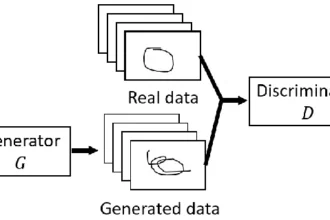Unraveling the Bayes Optimal Classifier: Unlocking the Secrets of Intelligent Decision Making
Have you ever wondered how machines make decisions? It’s fascinating to think that a computer can analyze vast amounts of data and come up with the best possible choice. Enter the Bayes Optimal Classifier, a powerful tool that allows us to understand the inner workings of intelligent decision-making.
In this blog post, we will delve into the world of the Bayes Optimal Classifier and uncover its secrets. But first, let’s address the burning question: why is it called optimal? Well, buckle up, because the answer will surprise you.
Join us on this journey as we explore the optimal decision rule, the remarkable power of Naive Bayes, and even dive into the Gibbs Algorithm for a captivating comparison. But that’s not all – we’ll also touch upon Bayesian Optimization and reveal the advantages it brings to the table.
So, whether you’re a data enthusiast, a curious mind, or simply want to impress your friends with your newfound knowledge, this blog post is for you. Get ready to unravel the mysteries behind the Bayes Optimal Classifier and uncover the secrets of intelligent decision making like never before. Let’s dive in!
Table of Contents
ToggleUnraveling the Bayes Optimal Classifier
In the intricate tapestry of machine learning and data mining, the Bayes Optimal Classifier emerges as a cornerstone concept. Its capacity to yield the most credible prediction for a new datum, armed with knowledge from a training dataset, is nothing short of remarkable. This probabilistic model is lauded for its principle-driven approach, manifesting in a variety of aliases such as the Bayes optimal learner, the Bayes classifier, Bayes optimal decision boundary, or the Bayes optimal discriminant function. Let’s delve deeper and demystify the layers of this statistical paradigm.
| Concept | Description |
|---|---|
| Bayes Optimal Classifier | A probabilistic model that provides the most probable prediction for a new example using the training dataset. |
| Also Known As | Bayes optimal learner, Bayes classifier, Bayes optimal decision boundary, Bayes optimal discriminant function. |
| Based On | Bayes Theorem, which offers a systematic method for calculating conditional probabilities. |
| Optimality Proof | Minimization of classification error for n possible categories by leveraging expectations. |
The allure of the Bayes Optimal Classifier lies in its rootedness in Bayes Theorem, a foundational framework that equips us to reckon conditional probabilities with precision and rigor. This theorem is the compass that guides the classifier through the labyrinth of data, steering it towards the most probable outcomes. Its optimality is not just an academic claim; it is underpinned by a robust proof. When it comes to categorizing each observation x into one of n possible categories, it is the Bayes Classifier that minimizes the error by deftly balancing expectations.
Consider the classifier as a sagacious guide in the realm of data. It discerns the subtle patterns and relationships within the dataset, weaving a decision fabric that is both intricate and intelligent. Every prediction it makes is a testament to the power of probability, and its decisions are calculated with the finesse of a seasoned strategist. It is this optimal deployment of statistical insights that makes the Bayes Classifier a revered tool among data scientists and machine learning practitioners.
As we anticipate the exploration of the Optimal Decision Rule in the upcoming section, it’s crucial to appreciate the Bayes Classifier not as a standalone marvel but as a beacon that illuminates the path to understanding the broader landscape of Bayesian optimization and its applications. The narratives of its advantages, coupled with a comparison to the Gibbs Algorithm, will further enrich our understanding of this probabilistic beacon.
Machine learning enthusiasts are continually captivated by the Bayes Optimal Classifier’s elegant simplicity and robust performance. It stands as a paragon, demonstrating that sometimes, the most optimal solutions are shrouded in the veils of probability and unveiled through the lens of Bayes’ insightful theorem.
Why is it Called Optimal?
In the grand chessboard of machine learning, the Bayes optimal classifier stands as the undefeated champion, its title of ‘optimal’ echoing its unmatched prowess. But what crowns this model with such a laudable designation? The secret to its supremacy is woven into the very fabric of its design—it is engineered to consistently outshine any rival within the same realm of hypotheses and prior knowledge. When it comes to decision-making, the Bayes optimal classifier is the embodiment of precision and wisdom.
Imagine a universe of classifiers, each vying for the throne of accuracy. In this cosmos, our Bayes optimal classifier reigns supreme, for it minimizes the classification error to a level that its contenders can only aspire to reach. Picture each potential error as a star in the night sky—while other classifiers might inadvertently navigate through these treacherous constellations, the Bayes optimal classifier charts a course that avoids them, guided by the light of probability and Bayes’ theorem.
At the heart of its reign lies the Bayes error rate, a theoretical minimum of mistake—a fortress that remains impregnable against the assaults of uncertainty. No other method, given the same tools and insights, can claim a lower rate of misclassification. It is this fortress, this minimal Bayes error rate, that bestows upon our classifier the title of ‘optimal’. It is not just a title; it is a statistical promise—a guarantee of the highest echelon of performance achievable by any standard.
The Optimal Decision Rule
As with any great leader, the Bayes optimal classifier operates by an optimal decision rule—a guiding principle that steers its course through the tumultuous seas of data. This rule is not one of impulse but of calculated precision. It chooses the prediction that minimizes the conditional expected loss, ensuring that each decision is not just a guess but a well-informed inference, meticulously weighed against the potential consequences.
The classifier functions like a sage, drawing from the well of knowledge to make predictions that are not merely good, but statistically the best. It does not rely on whims but on the robust framework of probability that underpins its logic. Each classification is a stone laid on the path of least resistance, the path that leads to the most probable and favorable outcome based on the evidence at hand.
Thus, the Bayes optimal classifier is not just a model; it is a testament to the power of informed decision-making. In the world of machine learning, it is the guardian of certainty, the arbiter of accuracy, and the beacon of optimal performance. Its decisions are the result of an intricate dance of data and probability, a ballet performed on the stage of informed prediction.
The Power of Naive Bayes
In the grand tapestry of machine learning, the Naive Bayes classifier emerges as a surprisingly formidable thread. It is celebrated for its simplicity and yet, paradoxically, for its robust performance in a myriad of applications including spam filtering, sentiment analysis, and medical diagnosis. The underlying principle of Naive Bayes is grounded in harnessing the power of Bayes’ theorem, which, in its essence, is a formula that describes how to update the probabilities of hypotheses when given evidence.
Despite its name, there is nothing ‘naive’ about the Naive Bayes classifier’s capabilities. It operates under the assumption that the features it uses to make predictions are independent of one another given the class label, an assumption that is often violated in the complexity of real-world data. Yet, it stands tall against this apparent naivety. The algorithm’s beauty lies in its ability to detach complexity from utility, proving that sometimes, simplicity translates into might in the battlefield of predictive analytics.
In comparison to its sophisticated counterpart, the Bayes Optimal classifier, Naive Bayes may seem like a rough estimation. The optimal classifier is a paragon of precision, tailoring its predictions by integrating over all possible hypotheses, weighted by their evidence-supported probabilities. Naive Bayes, on the other hand, skirts around this computational intensity by making an assumption of independence that simplifies the entire process. This simplification is its secret weapon, enabling it to run swiftly and efficiently where more complex models would trudge and falter.
It’s a classic tale of the underdog: the Naive Bayes classifier, with its conditional independence assumption, steps into the arena where the ground reality of data interdependence could easily lead to its downfall. Yet, it stands firm, delivering results that resonate with accuracy, speed, and scalability. This juxtaposition of simplicity and performance is a testament to the ingenuity of Naive Bayes, making it a beloved choice among data scientists and industry practitioners alike.
Gibbs Algorithm: A Comparison
Turning our gaze to the Gibbs algorithm, we find another contender in the realm of classification. It’s a sampling-based approach, a member of the Markov Chain Monte Carlo (MCMC) family, that generates samples from the posterior distribution of a model’s parameters. When juxtaposed with the Bayes Optimal classifier, the Gibbs algorithm reveals an intriguing characteristic: its error is bounded, which suggests a certain level of predictability and reliability in its performance. Specifically, the error of the Gibbs Classifier does not exceed twice that of the Bayes Optimal classifier, a feature that can be particularly comforting when navigating the uncertain waters of data-driven decision-making.
This bounded error property endows the Gibbs algorithm with a badge of consistency, making it an ally when the stakes are high and the margin for error is slim. It may not reach the pinnacle of perfection that the Bayes Optimal classifier occupies, but it offers a pragmatic balance between computational feasibility and classification performance. In the chess game of algorithm selection, the Gibbs algorithm is a strategic move that offers robust defense against the unpredictability of data.
Bayesian Optimization
In the quest to achieve the pinnacle of algorithmic efficiency, Bayesian optimization stands out as the ingenious strategist of the machine learning realm. It is akin to a master chess player who meticulously plans their moves, learning from each skirmish on the board. The essence of this strategy lies in its dynamic approach to problem-solving, continuously refining its technique based on the outcomes of prior engagements.
Imagine you are navigating a labyrinthine garden, seeking the most radiant bloom. Would you wander aimlessly, or would you choose your path informed by the vibrancy of the flowers you have already encountered? Bayesian optimization adopts the latter approach. It uses a model-based method for global optimization, mapping out an objective function like an explorer charting a course through unknown territories. The goal: to discover the optimal parameters that will yield the best performance of a predictive model.
At its core, Bayesian optimization operates on the principle of building a probabilistic model, which encapsulates beliefs about the unknown objective function. Each evaluation enriches this model, honing its predictive power. This is a stark contrast to methods like random search or grid search, which operate blindly, lacking the nuance of learning from history.
For data scientists, the lure of Bayesian optimization is clear. It propels the search for the elusive sweet spot within an algorithm’s hyperparameters, particularly when the function is shrouded in complexity, or the evaluation of each set of parameters incurs a high computational cost. In the modern data-driven world, where time is as precious as accuracy, the efficiency gains from such an informed search process are invaluable.
By incorporating Bayesian optimization, the Bayes optimal classifier transcends the conventional boundaries of machine learning models. It becomes not only a predictor but also an optimizer, a tool that gracefully balances the scales of precision and expediency. This dual role is pivotal—especially when dealing with real-world data that is often noisy and unstructured, which can lead to a labyrinth of possible solutions, each more intricate than the last.
In practical terms, Bayesian optimization uses techniques such as Gaussian processes or sequential model-based optimization to construct its understanding of the objective function. The algorithm iteratively selects the next query point by weighing up the trade-off between exploration of uncharted areas and exploitation of known promising regions. This intelligent selection process is what sets Bayesian optimization apart, making it an indispensable ally in the arsenal of machine learning methodologies.
As we continue to peel back the layers of this fascinating subject, the next section will delve into the distinct advantages of Bayesian optimization. These benefits not only underscore its practicality but also highlight its transformative impact on the landscape of machine learning and artificial intelligence.
Advantages of Bayesian Optimization
In the quest to unveil the most powerful tools in the machine learning arsenal, we encounter a formidable ally: Bayesian optimization. This technique, akin to a master chess player, anticipates and strategizes, evolving with each move it makes. Let’s delve into the wellspring of benefits this technique offers, transcending the mere pace of computation.
Imagine a world where the path to peak performance doesn’t necessarily rely on the smoothness of the terrain. Bayesian optimization thrives in such environments, dealing with objective functions that come in all shapes and sizes—differentiable or not. This quality is a beacon of hope in the rugged landscapes of discrete and combinatorial optimization problems, where traditional gradient-based methods would stumble and falter.
Moreover, this approach sidesteps the need for derivatives altogether, which is a game-changer. In situations where computing gradients is computationally demanding or downright infeasible, Bayesian optimization shines. It’s like navigating a complex labyrinth with a map that updates in real-time, showing you the most promising paths, while gradient-based methods would require you to painstakingly measure each wall and corner.
Let’s not forget the Bayes optimal classifier, the embodiment of prediction perfection in this panorama. With its ability to harness the full spectrum of data and focus on making the most probable predictions, it shines a light on the path of minimum error. It’s a paragon of precision, a tool that professionals in machine learning and data mining turn to when they seek to strike that delicate balance between accuracy and computational efficiency.
In essence, Bayesian optimization is not just about being faster; it’s about being smarter. It’s about harnessing the power of probability and prior knowledge to make informed decisions on where to venture next in the search space. It’s a tale of triumph for those who value both the journey and the destination in the optimization odyssey.
As we continue to unravel the layers of machine learning, the role of Bayesian optimization stands out, a testament to the ingenuity of marrying probability with decision-making. It is a technique that whispers the secrets of the unknown, guiding us to the peaks of performance with a quiet confidence.
With each iteration, Bayesian optimization refines its understanding, converging towards the optimal solution with the poise of a sage. It is not just an algorithm; it’s a philosophy, a way of thinking that empowers us to look beyond the horizon and find order in chaos.
Thus, the journey through the landscape of optimization continues, with Bayesian optimization as our compass, pointing us towards the realms of possibility where the Bayes optimal classifier awaits to bestow its wisdom. And as we step forward into the next section, we carry with us the insights gleaned from this powerful approach, ready to explore further depths.
Q: What is a Bayes optimal classifier?
A: A Bayes optimal classifier is a probabilistic model that makes the most probable prediction for a new example, given the training dataset. It is also known as the Bayes optimal learner, the Bayes classifier, Bayes optimal decision boundary, or the Bayes optimal discriminant function.
Q: How is the Bayes optimal classifier described in Bayesian terms?
A: The Bayes optimal classifier is described using the Bayes Theorem, which provides a principled way for calculating a conditional probability. It is a probabilistic model that makes the most probable prediction for a new example.
Q: Why is the Bayes optimal classifier considered optimal?
A: The Bayes optimal classifier is called optimal because no other classification method using the same hypothesis space and prior knowledge can outperform it, on average. It is the most accurate classifier given the available information.
Q: How does the Bayes optimal classifier make predictions?
A: The Bayes optimal classifier uses the training dataset and probabilistic calculations to determine the most probable prediction for a new example. It takes into account the prior knowledge and conditional probabilities to make accurate predictions.





